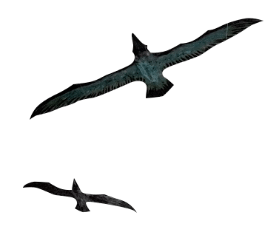Though Denmark was the first European country to abolish the transport of enslaved Africans in 1792, approximately 120,000 people from present-day Ghana were brought to the Danish West Indies (now the United States Virgin Islands) to plant and harvest sugar cane. The emancipation of slaves on the Danish West Indies occurred in 1848, and the Virgin Islands’ former plantation economy collapsed. In 1917, Saint Croix, Saint John, and Saint Thomas were sold to the United States and introduced into yet another national narrative. In October 2020, the National Nordic Museum will present the exhibition La Vaughn Belle: A History of Unruly Returns. This exhibition brings to light whole truths of this historical episode through the fragments of material culture it left behind.
La Vaughn Belle: A History of Unruly Returns features the paintings of contemporary artist La Vaughn Belle. Based on the island of Saint Croix, Belle investigates the legacy of colonialism. The exhibition will feature approximately six large-scale paintings from her series “Chaney (We Live in the Fragments)” (2015-present). “Chaney” refers to ceramic shards found in abundance in the soil of Saint Croix. Belle explains, “There are small fragments of pottery, often blue and white, that surface the soil in the Virgin Islands after a hard rain and glimmer. Coming first as plates, tea pots and cups from Holland, England, Denmark and North America as part of the vast transatlantic trade of the last centuries of the second millennia, they became its detritus, broken down into the soil, just like the traded bodies. The fragments return to the open air as offerings. Children would pick up these shards, claim them and grind them round to mimic coins.” The unearthing of this patterned pottery evokes the past and its legacy. Belle paints enlargements of different Chaney patterns and, when pieced together as a series, the images become a visual metaphor for the diverse origins and identities of Caribbean people today. Belle notes that “as daughters and sons of the dispersion, we are but many fragments – Danish, British, Yoruba, Akwamu, Kalinago, Taino – we are pieces of patterns and peoples that we may no longer recognize or acknowledge.”
This exhibition is the first solo exhibition of Belle's work in the Pacific Northwest.


